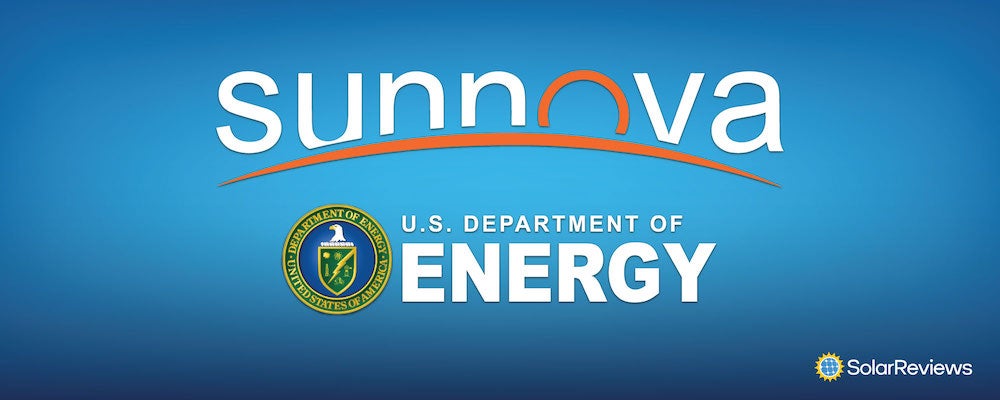Sunnova’s Project Hestia will provide solar loans to homeowners in disadvantaged communities
Updated
Updated

On April 20th, 2023, Sunnova announced "a conditional commitment by the U.S. Department of Energy (DOE) Loan Programs Office (LPO)" to provide up to $3.0 billion in partial loan guarantees to support a new type of solar loan program from Sunnova called "Project Hestia."
This is a large loan guarantee, representing about 25% of the $11.7 billion appropriated for the LPO in the Inflation Reduction Act. The funding would allow Sunnova to offer low-cost solar loans to tens of thousands of new customers, with the intent of prioritizing "disadvantaged individuals and communities."
The company says all the solar installations under the program will be outfitted with its "Adaptive Home" technology, which can manage a solar and battery storage system to maximize savings and potentially provide value to the grid. Sunnova plans to offer the first loans under the program by the middle of 2023.
Let's look a little deeper into what Project Hestia could mean for Sunnova, its customers, and U.S. taxpayers. As a disclaimer, the article below assumes that Sunnova will meet the conditions specified in the DOE commitment.
Sunnova bills itself as an "Energy as a Service" (EaaS) company, offering those services through over 1,300 dealers in 42 U.S. states and territories. The company combines OEM hardware from companies like Qcells, Tesla, Generac, and SolarEdge, along with its own purpose-built software.
The DOE says that Sunnova had approximately 250,000 customers across the United States as of September 2022, 14% of whom had battery storage added to their solar systems.
Sunnova offers a few different methods of solar panel financing, including solar loans, leases, and PPAs.
Project Hestia (named after the Greek goddess of hearth, home, and hospitality) is specifically designed to offer solar loans to people with a wide variety of incomes and credit scores. A press release from the DOE says that Sunnova will offer "at least 20% of Project Hestia loans to assist customers with credit scores of 680 FICO or less."
The LPO will partially guarantee the cash flows associated with Sunnova's loans to disadvantaged individuals, essentially reducing the overall risk associated with the loan profile and allowing the company to offer all participants more favorable terms.
DOE says the leans will be offered to between 75,000 and 115,000 homeowners, resulting in approximately 568 MW of installed solar (an average system size of between 5 kW and 7.5 kW). Sunnova anticipates that around 30% of these customers will install battery storage alongside their solar installations.
Every installation under Project Hestia will include Sunnova technology designed to "facilitate demand response behavior." Sunnova offers its customers a suite of software and hardware called "Adaptive Home," which is designed to make a solar installation ready for participation in Virtual Power Plants (VPPs) and demand response programs.
VPPs and demand response are ways that utilities can take advantage of distributed energy resources (DERs), like home batteries, solar panels, and smart thermostats, to respond to high demand on the energy grid.
By activating a home's devices and appliances at specific times, utilities can increase the available supply of power and/or decrease demand for those customers who participate in the programs. In many cases, participating in these programs earns customers payments from the utility for the services they provide to the grid.
Few of these programs currently exist around the country—mostly in coastal states with high electricity prices—but more programs are being proposed all the time. Many solar providers already participate in VPPs, including Tesla, Sunrun, and even Sunnova. Sunrun, SunPower, Google, GM, and others have launched a consortium dedicated to expanding opportunities for VPPs.
The Adaptive Home technology that will be installed alongside solar systems under Project Hestia is designed to allow Sunnova customers to participate easily in VPPs and demand response programs. The added benefits of participating in these programs should make the Sunnova installations more financially beneficial and, therefore, more affordable to low-income customers.
To learn more, read Sunnova's page on so-called "grid services".
The details of how Sunnova's customers will experience Project Hestia loans have yet to be released. We're interested to learn about the program's design, from expected loan terms, interest rates, and dealer fees to how Sunnova's technology will work inside customer homes in everyday operations.
One big question we have is about tax credit eligibility. The federal solar tax credit allows solar panel owners to claim up to 30% of the costs to install solar as a tax credit in the year after installation, but only applies to taxpayers who owe taxes at the end of the year.
Sunnova is targeting at least 20% of Project Hestia loans to people in Puerto Rico and another substantial portion of the loans to disadvantaged individuals. Neither of these groups of people will be likely to take advantage of the tax credit, meaning their systems will be 30% more expensive than those installed for customers with sufficient tax liability.
We've contacted Sunnovca and the DOE representatives regarding these details but have yet to hear back from them.
At this point, we don't have enough details to recommend Project Hestia to any individual homeowner. We will watch how things develop as Sunnova comes closer to offering its first loans under the program.
If you've been waiting to go solar because you're hoping for some way to make it more financially advantageous, it may be worth waiting to see what companies like Sunnova have to offer as VPPs become more widespread. The payments that come with participating in some current programs are not insignificant and could make solar a better option for people in states with low-to-average electricity prices.
People in states like New York, Massachusetts, Connecticut, and New Jersey already have excellent solar incentives, and many can join a VPP or demand response program. We have a guide to currently available solar battery incentives that covers many of them if you want to learn more.